MARIANI’SVirtual Gourmet
May 6, 20012
NEWSLETTER
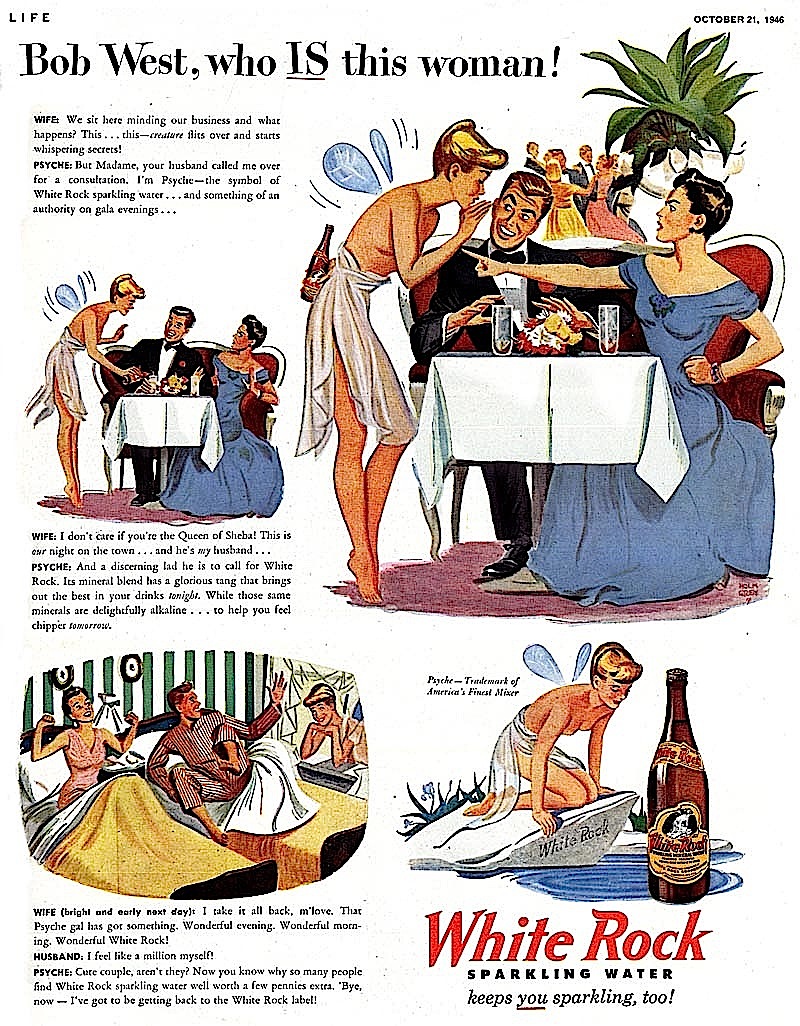
❖❖❖
ANNOUNCEMENT
On Monday, May 21, John Mariani will be appear
as part of a Celebrity Author Wine
Dinner Series at Davio's Philadelphia, 111
South 17th Street, to talk about his book How
Italian Food Conquered the World. The
wine dinner series will feature wine pairings
presented by Davio’s Sommelier Kevin McCann
and will feature a menu by Executive Chef
David Boyle. Each guest will leave with a
signed copy of the author’s book as part of
the $85.00 per person (tax and gratuity not
included). Call 215-563-4810.
❖❖❖
NEW ENGLAND SOJOURN: PROVIDENCE, RI
by Christopher Mariani
Bristol, RI: Persimmon
by John Mariani
NEW YORK CORNER
The Four Seasons
by John
Mariani
❖❖❖
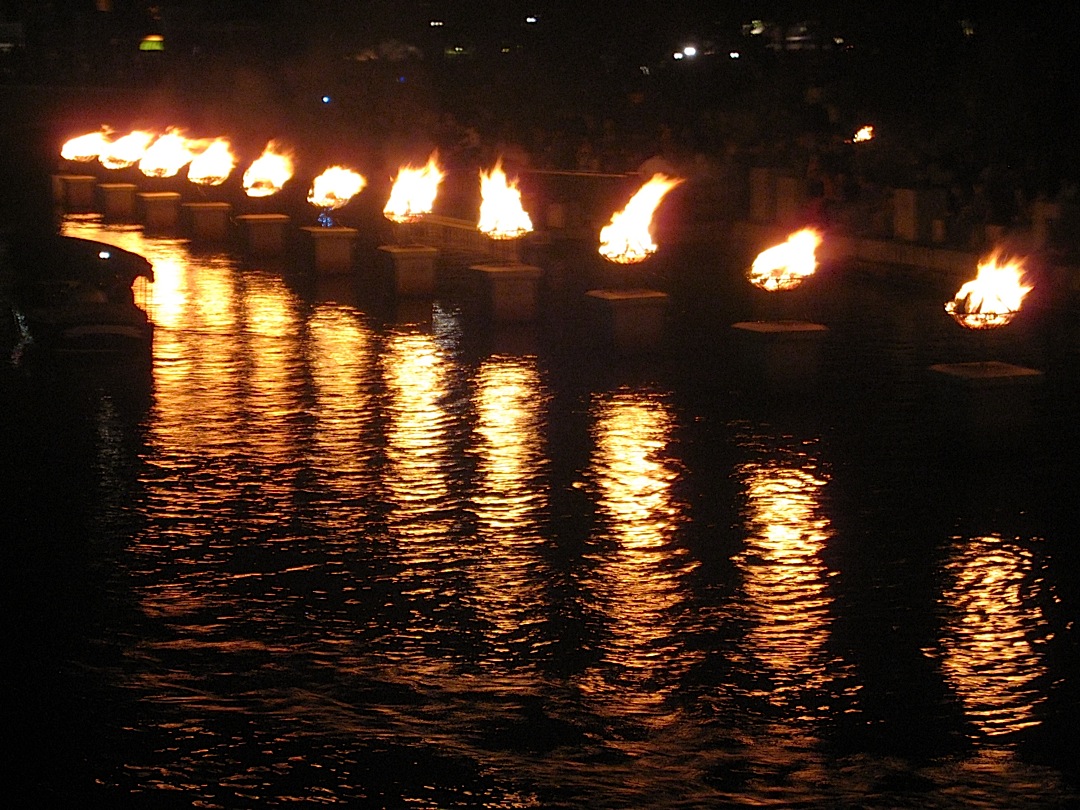
WATERFIRE, PROVIDENCE RI
I’ve lived in the
Northeast my entire life and have enjoyed all four
seasons as they come and go, sometimes abruptly,
year after year. The
New Year always beckons frigid temperatures and more
often than not, unforgiving snowfalls. I am now
calloused to these conditions, spending many days
and nights shoveling mountains of snow from my
driveway. As the snow falls, life goes on with
little hesitation. The crushing hum of a steal
snowplow grinding against the street’s concrete is
an almost comforting sound. The massive chains
wrapped loosely around the treaded tires tinkle as
they pass you by. The air is chilly and unforgiving.
A few months go by and the
temperature slowly rises and the snow begins to melt.
Spring has arrived. The trees awaken, flowers bud, and
millions of soft green leaves sprout. The smell of
burning charcoal fills the air as BBQs bellow clouds
of smoke high into the sky. The constant sound of
birds chirping is everywhere as they rip through the
air on strong wings. Then, the warmth of spring turns
to a boil. Summer has arrived. The heat is
overwhelming and the air becomes heavy. The cicadas
are constantly buzzing in waves that only damper down
when the sun begins to set. The hot, thick air then
starts to cool. The fall has arrived. The air smells
crisp and is no longer damp. The flowers are gone, as
will soon be the trees’ leaves. The beauty of fall is
abundant and the temperature, well, perfect.
This past fall my girlfriend and I took a short
road trip from the suburbs of Westchester County, NY,
to Providence, RI. I had the luxury of driving a brand
new, 2012, cherry red, Mercedes Benz convertible
SLK350 Roadster as we weaved around other cars with
ease. She
was a demo and gorgeous. With the top down, we cruised
north on I-95. Once beyond New Haven, we slowed down
and savored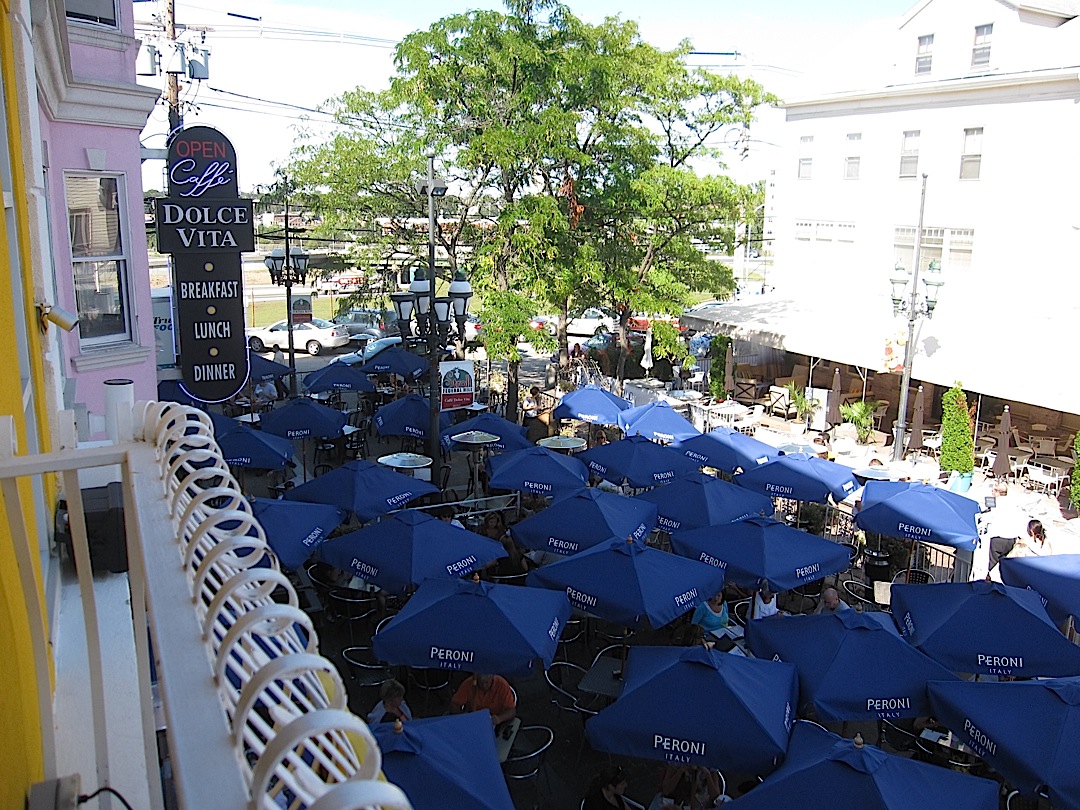 the scenery
of this magnificent season.
the scenery
of this magnificent season.
 When
we
arrived in Providence, the city was lively, full of
casually dressed locals strolling the streets of
Federal Hill, a highly eclectic neighborhood filled
with boutique cupcake shops, Middle Eastern specialty
gourmet markets, Italian restaurants and many pubs.
The sun was shining bright and everyone was savoring
this lovely Friday afternoon. After driving up and
down Broadway, we found the Hotel Dolce Vita,
our placid retreat for the extended weekend. We entered our
white-walled two-bedroom suite, overlooking La Salle
Square, a charming, pedestrian-only passage filled
with cozy restaurants and live music at nighttime.
That afternoon, we stopped by Lili Marlene’s (422 Atwells Avenue),
a terrific hangout, where Bob, the bartender, put
together some well-made Negronis. We stuck around for
an encore of drinks and then walked a few blocks up
Atwells Avenue to Pane
E Vino (below),
one of Federal Hill’s finest Italian restaurants, open
now for ten years and thriving.
When
we
arrived in Providence, the city was lively, full of
casually dressed locals strolling the streets of
Federal Hill, a highly eclectic neighborhood filled
with boutique cupcake shops, Middle Eastern specialty
gourmet markets, Italian restaurants and many pubs.
The sun was shining bright and everyone was savoring
this lovely Friday afternoon. After driving up and
down Broadway, we found the Hotel Dolce Vita,
our placid retreat for the extended weekend. We entered our
white-walled two-bedroom suite, overlooking La Salle
Square, a charming, pedestrian-only passage filled
with cozy restaurants and live music at nighttime.
That afternoon, we stopped by Lili Marlene’s (422 Atwells Avenue),
a terrific hangout, where Bob, the bartender, put
together some well-made Negronis. We stuck around for
an encore of drinks and then walked a few blocks up
Atwells Avenue to Pane
E Vino (below),
one of Federal Hill’s finest Italian restaurants, open
now for ten years and thriving.
Sitting on the street side of the restaurant,
we stared out onto the busy avenue through open
windows as cars slowly crept up and down the street.
We started with a wonderful bottle of Nebbiolo,
reminding me of a recent trip to Langhe, Italy, as we
flipped through Chef-owner Joe DeQuattro's lengthy
dinner menu. 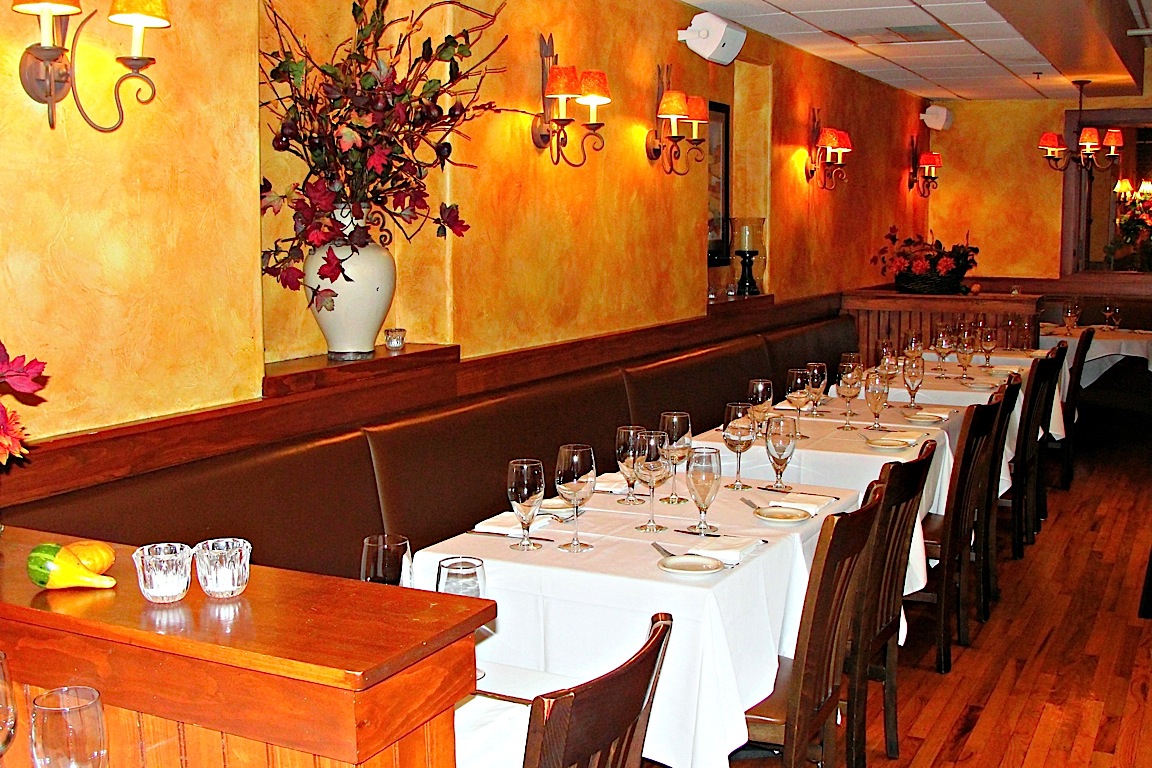 Appetizers included
Narragansett Creamery mozzarella, served with sweet
cherry tomatoes and a basil pesto along with an order
of crispy calamari fritti from
Point Judith, topped by a white balsamic vinegar and
tomato aioli. Next came the pastas: one in particular,
the risotto ai
frutti mare, made with Canaroli rice, tomato sea
broth, Prince Edward Island mussels and loads of local
seafood. The menu also offers seasonal game birds,
veal scaloppine and three cuts of meat, all cooked on
a wood-burning grill. The service is young and
attentive, well trained and extremely friendly. After
dinner, we wandered back to the Dolce Vita Hotel where
we sat outside for an espresso in the plaza.
Appetizers included
Narragansett Creamery mozzarella, served with sweet
cherry tomatoes and a basil pesto along with an order
of crispy calamari fritti from
Point Judith, topped by a white balsamic vinegar and
tomato aioli. Next came the pastas: one in particular,
the risotto ai
frutti mare, made with Canaroli rice, tomato sea
broth, Prince Edward Island mussels and loads of local
seafood. The menu also offers seasonal game birds,
veal scaloppine and three cuts of meat, all cooked on
a wood-burning grill. The service is young and
attentive, well trained and extremely friendly. After
dinner, we wandered back to the Dolce Vita Hotel where
we sat outside for an espresso in the plaza.
The following day, we
headed to historic Newport for a day of leisure.
Although largely tourist driven, Newport is still
enchanting, sometimes showing signs of pretentiousness
as many day-trippers spend carelessly and happily wait
on long lines for overpriced seafood. The great
mansions of the early 20th century, the Cliff Walk,
and the docks remind you of a very, very different
time. Best place to stay at Newport is the
beautiful Castle
Hill Inn (below),
just outside of town. You can stay in the 19th century
mansion itself, the Harbor House Rooms, the Beach
House Rooms, the Chalet or one of the Beach Cottages.
The Inn also has a fine dining restaurant on
property.
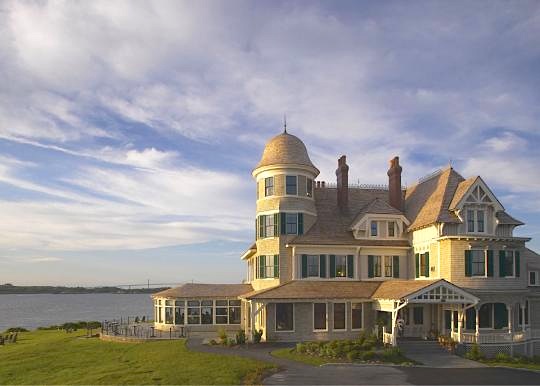 After touring the area and
sipping a lemonade slushy from Del’s, we sat
underneath an umbrella by the harbor and dug through a
big wooden bowl of spicy, steamed mussels and a dozen
raw oysters served over a bed of shaved ice,
accompanied by two frosty Samuel Adams Lagers. The sun
was shining and the air was filled with the taste of
sea salt. It was tough leaving such a charming city of
18th century
houses, maritime memorabilia, and rich New England
history, but we had to get back
After touring the area and
sipping a lemonade slushy from Del’s, we sat
underneath an umbrella by the harbor and dug through a
big wooden bowl of spicy, steamed mussels and a dozen
raw oysters served over a bed of shaved ice,
accompanied by two frosty Samuel Adams Lagers. The sun
was shining and the air was filled with the taste of
sea salt. It was tough leaving such a charming city of
18th century
houses, maritime memorabilia, and rich New England
history, but we had to get back 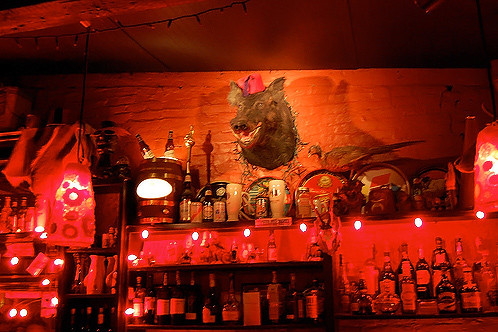 to
Providence. We were heading to The Red Fez (49 Peck Street)
that evening for dinner.
to
Providence. We were heading to The Red Fez (49 Peck Street)
that evening for dinner.
Hidden away in downtown
Providence, The Red Fez (right) is a real
local joint, signless, that even our local cab driver
could not find after passing by it three times. The
façade is dark, barely allowing a glimpse
inside. Once through the front door, you will be
rushed to a table (no reservations here!) and handed a
menu. We
sat at the bar, where we were finally greeted by a
pleasant bartender. The menu is simple and offers
dishes like macaroni and cheese with cheddar, swiss
and smoked gouda, smoked pork shoulder with cornbread
and collard greens, and General Tso's pigtails.
Before heading back to our hotel, we stopped by
the city’s famous WaterFire, a chain of 100 bonfires
hovering above the river for almost a full mile.
Performers play music and viewers huddle close
together to watch the mesmerizing glow, lighting up
the entire river.
The following morning, we jumped back in our
car, put the top down and hit the gas. I would have to
assume Providence is joyful at anytime of the year but
I’m sure you will enjoy it, as I did, most in the
fall.
. . . AND JUST OUTSIDE
PROVIDENCE,
A GREAT NEW ENGLAND RESTAURANT
by John Mariani
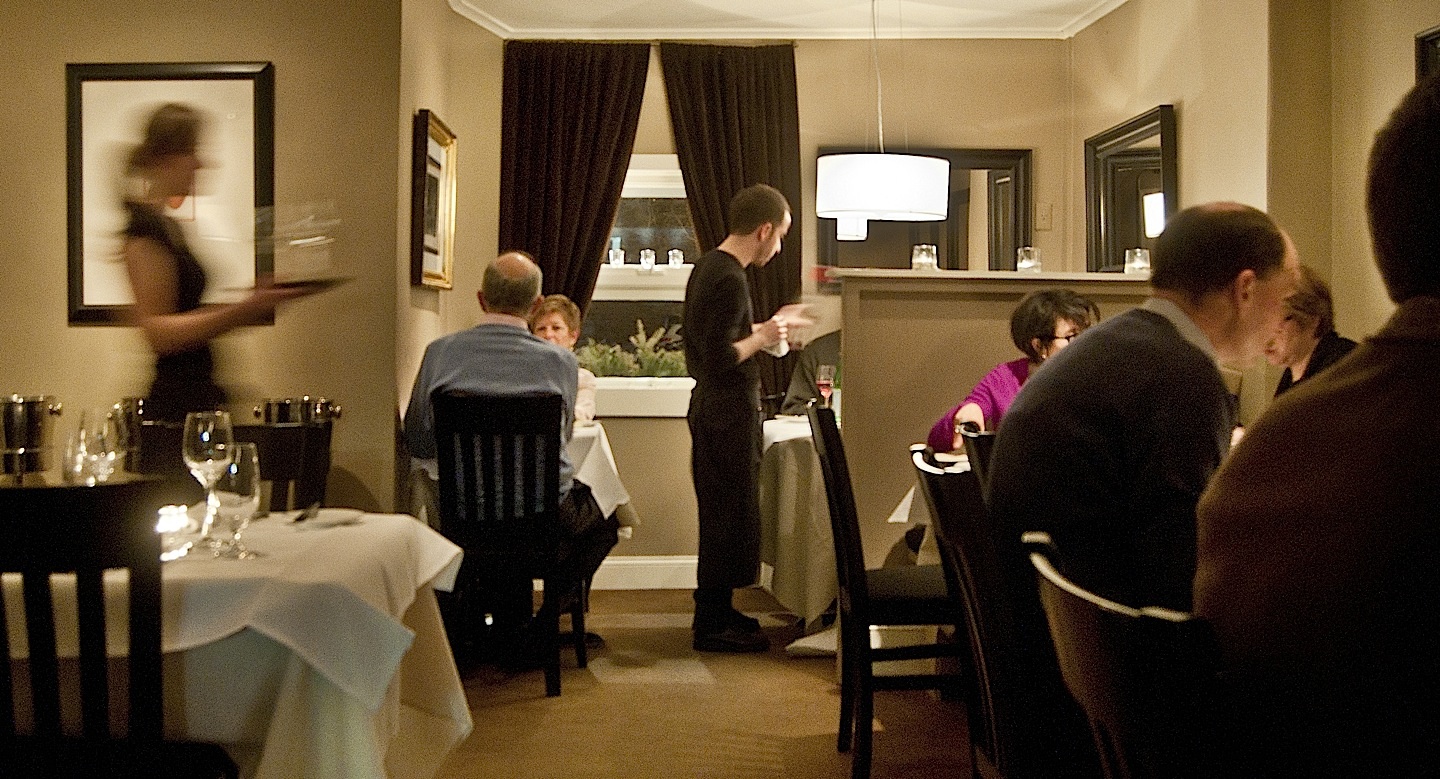 persimmon
persimmon
31 State Street, Bristol
401-254-7474
www.persimmonbristol.com
Head southeast out of Providence, down past Barrington
and Warren, along Narragansett Bay, and you'll slip
across a bridge and into Bristol, one of the finest,
best preserved 17th century colonial towns in New
England. Here the first battle of King Philip's War
took place in 1675, and it was long a prime boat
building town, which included crafting five
consecutive America's Cup defenders. It is also home
to Roger Williams University. Restaurants are not a part
of the town's allure, but just a block up from the
Bay, on State Street, behind an unassuming little
storefront façade, is one of New England's very
finest restaurants, the 38-seat Persimmon.
The place is the
labor of love of Chef Champe Speidel and his
wife Lisa (right), who are very focused on doing the
big and small things right. Needless to say, he draws
from a cornucopia of New England provender, so his
menus are highly seasonal, created each day.
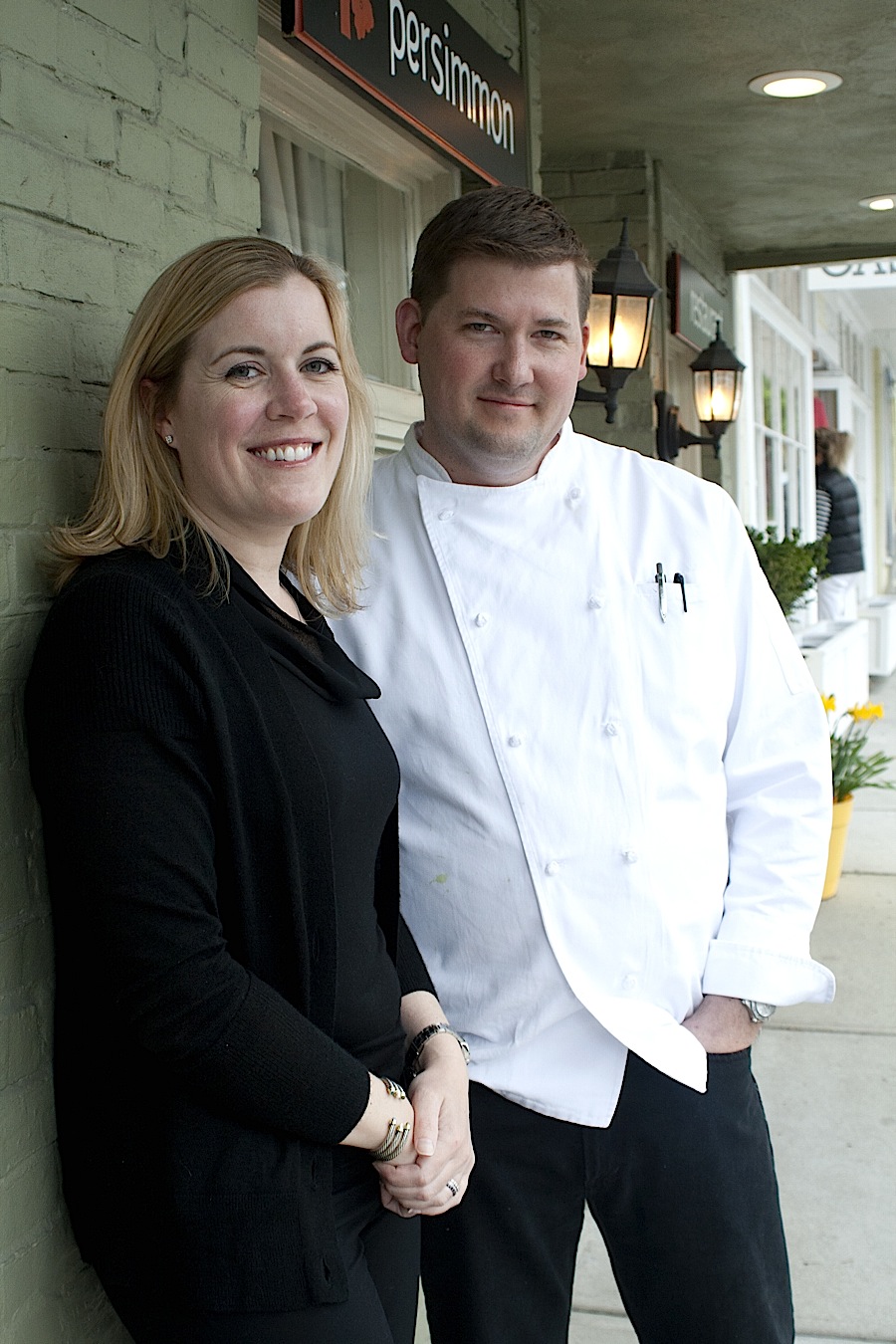 The intimate
dining room is cozy, done in taupe pastels, with
crisp white tablecloths and perfect, soft lighting.
For a place this size, Persimmon has a formidable
winelist and it's very fairly priced in every
category. Since I have not dined
at Persimmon since last summer, I would hesitate to
rave about the dishes I had, so I will instead refer
you to their current menu, which is wholly
expressive of the style Champe works in. It's
a place not to miss, one of those "worth a detour"
spots that, while not at all remote, has the the
effect of slowing you down to appreciate what
true excellence exists in wonderful small
American towns.
The intimate
dining room is cozy, done in taupe pastels, with
crisp white tablecloths and perfect, soft lighting.
For a place this size, Persimmon has a formidable
winelist and it's very fairly priced in every
category. Since I have not dined
at Persimmon since last summer, I would hesitate to
rave about the dishes I had, so I will instead refer
you to their current menu, which is wholly
expressive of the style Champe works in. It's
a place not to miss, one of those "worth a detour"
spots that, while not at all remote, has the the
effect of slowing you down to appreciate what
true excellence exists in wonderful small
American towns.
Warm Powder Point oysters with wakame seaweed butter and ginger oil.
Pan seared Hudson Valley foie gras with poached and pickled rhubarb, braised duck neck and caramelized hazelnuts.
Massachusetts sea scallop and fluke ceviche with Meyer lemon, ginger, cucumber, celery, radish, avocado, fresh chilies, basil and cilantro flowers.
Creamy soup of carrots and caraway seed with glazed and slow roasted carrots, carrot greens, butter-poached lobster.
Crispy tempura Maryland soft-shell crab with native sorrel and Jonah crab butter.
Slow poached Zephyr Farm egg with goat’s milk ricotta agnolotti, grilled ramp leaves, native asparagus, speck and goat’s milk whey emulsion.
Warm salad of early spring vegetables, herbs and flowers with vegetable crisps and herbed buttermilk vinaigrette.
Entrées
Grilled New Hampshire pork sirloin with braised native greens, cabbage and collard buds, persimmon provisions pork sausage, light jus with herbs and native rhubarb.
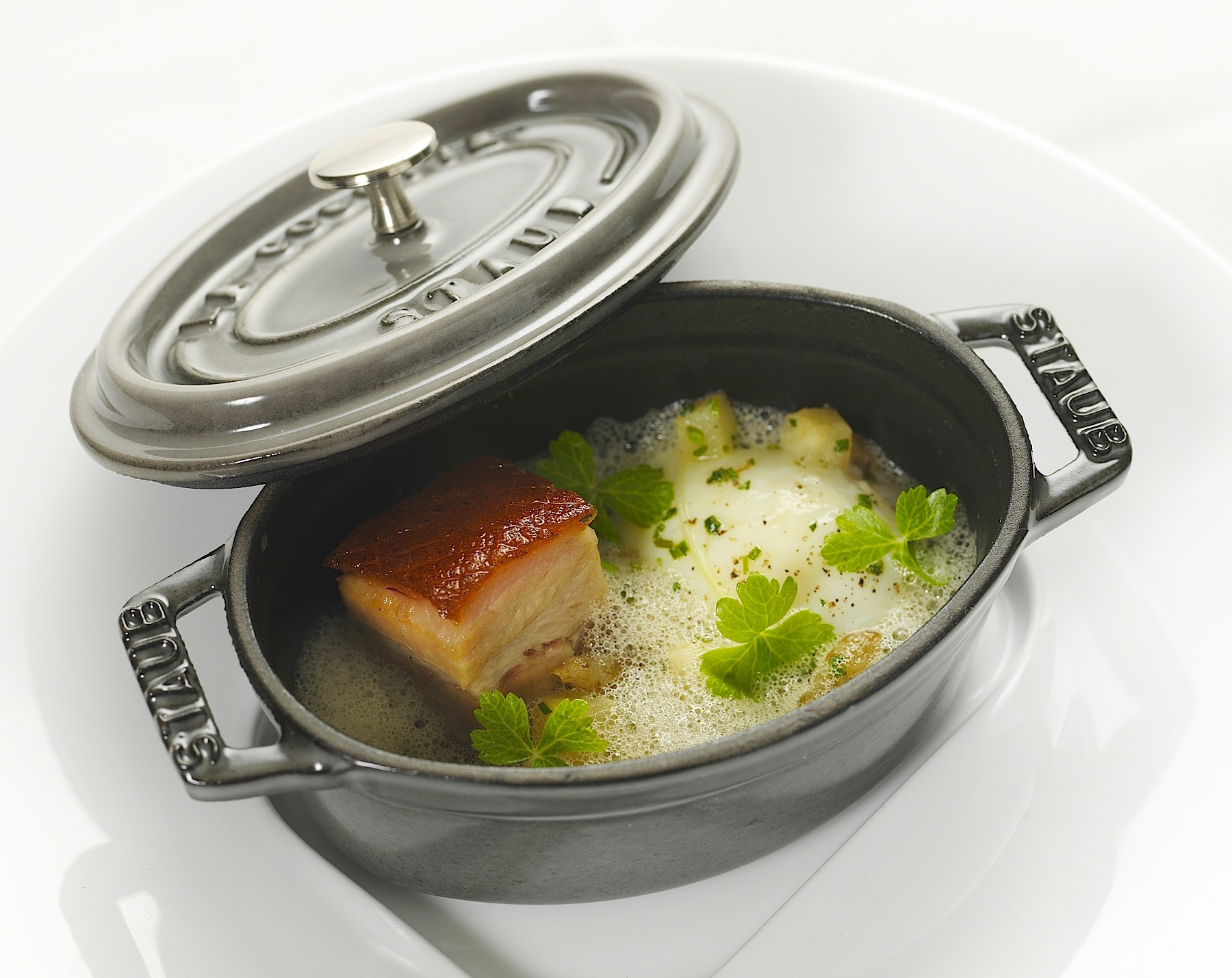 Braised Vermont lamb breast and shoulder
with lamb sausage, hand-rolled potato gnocchi,
artichokes, fresh legumes, asparagus and greens, light
lamb braising jus.
Braised Vermont lamb breast and shoulder
with lamb sausage, hand-rolled potato gnocchi,
artichokes, fresh legumes, asparagus and greens, light
lamb braising jus.Point Judith John Dory filet with jumbo sea scallops, lobster, octopus, glazed fennel, potatoes and pearl onions, bouillabaisse sauce with saffron and tomato.
Pan seared Rhode Island tautog filet with littleneck clams and rock shrimp, native Swiss chard and endive, light butter sauce with fresh tarragon and oregano.
Pan roasted Pacific halibut filet with native asparagus, mustard greens, creamy leeks, crispy potato galette and a red wine sea sauce.
Crispy skin Long Island duck breast and confit leg with glazed carrots, baby turnips and radishes, rosemary-infused sauce reduction.
Pan roasted beef ribeye steak with king trumpet mushrooms, scallions, glazed cippolini onions, potato purée, and Sauce Bordelaise.
The Persimmon spring vegetable tasting: four different presentations.
Persimmon is open for dinner Tues.-Sat. January to June, and Tues.-Sun. July to December. Dinner appetizers are $9-$17, main courses $21-$31.
Chef’s
five-course tasting menu available $65 Additional
wine pairings
$35; Seven-course menu $80 Additional
wine pairings
$50
❖❖❖
NEW
YORK CORNER
by John Mariani
THE
FOUR SEASONS
99
East 52nd Street
212- 754-9494
www.fourseasonsrestaurant.com
 Fifty
three years. Six decades. The Four Seasons, opened in
1959 in the revolutionary architectural marvel named
The Seagram Building (left), has seen the beginning of the
Mad Men era. The Vietnam War. The tenures
of eleven U.S. Presidents, many of whom have dined
here. The fads and fancies of nouvelle cuisine, New
American cuisine, molecular cuisine, locavorism, and
many more. It has kept its doors open after so many
other famous restaurants closed theirs--Lutèce,
The Quilted Giraffe, Maxwell's Plum, Forum of the
Twelve Caesars, Tavern on the Green, the Rainbow Room,
Café des Artistes, Lever House,
Fifty
three years. Six decades. The Four Seasons, opened in
1959 in the revolutionary architectural marvel named
The Seagram Building (left), has seen the beginning of the
Mad Men era. The Vietnam War. The tenures
of eleven U.S. Presidents, many of whom have dined
here. The fads and fancies of nouvelle cuisine, New
American cuisine, molecular cuisine, locavorism, and
many more. It has kept its doors open after so many
other famous restaurants closed theirs--Lutèce,
The Quilted Giraffe, Maxwell's Plum, Forum of the
Twelve Caesars, Tavern on the Green, the Rainbow Room,
Café des Artistes, Lever House,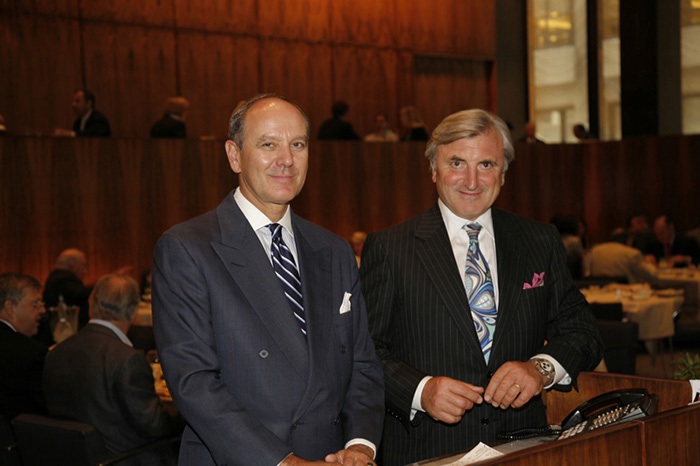 Terrace in
the Sky, Top of the Sixes, and dozens of others have
passed into NYC restaurant history.
Terrace in
the Sky, Top of the Sixes, and dozens of others have
passed into NYC restaurant history.
Designed by Philip Johnson and
William Pahlmann to look like no other restaurant in
the world, its interior was eventually landmarked; its
famous dining room pool is always bubbling, its beaded
metal curtains always rippling, its 30-foot trees
changed each season. Under three different
managements, Restaurant Associates, Tom Margittai and
Paul Kovi, and today, owners Alex von Bidder and
Julian Niccolini (right),
it did not always thrive--indeed for its two three
decades profits were slim or non-existent. Only in the
1970s, when what Esquire
Magazine dubbed the "power lunch" did business in the
Grill Room become something as critical to
understanding NYC's tycoons and politicians,
fashionistas and media, as reading the New York Times
and Wall Street
Journal.
The Four Seasons pioneered the
acceptance of California wines and created the
trademarked Spa Cuisine. It was where John F.
Kennedy and Marilyn Monroe came for dinner after his
famous Madison Square Garden birthday party and where
actress Maureen Stapleton serenaded Stephen Sondheim
in the hope of getting into his new show. Jimmy
Carter's brother Billy was refused entrance because he
did not wear a jacket.Mark Rothko painted a series for
the private dining room, then refused to hang them
(they are now in London's Tate), and artwork has
included paintings by James Rosenquist and Frank
Stella. And, over the years, more than
one woman has stripped down and plunged into the pool.
I know all this because I wrote,
with Alex von Bidder, a social history of The
Four Seasons (1999), which won a James Beard
Foundation award. And since then I've kept up with the
changes, which to the outside world all seem very
minor or wholly unnoticed. In all that time the
restaurant has only had a handful of executive chefs,
since 2009 Pecko Zantilaveevan, Thailand-born, who had
been sous-chef for 13 years. During those years he
used to make kitchen snacks from his Thai-Chinese
background and many were adapted for service in the
dining rooms. Von Bidder and Niccolini still run
the place as they always have, the former in a wry,
genteel manner, the latter with a puckish glee in
puncturing the pretensions of
even his most powerful guests.
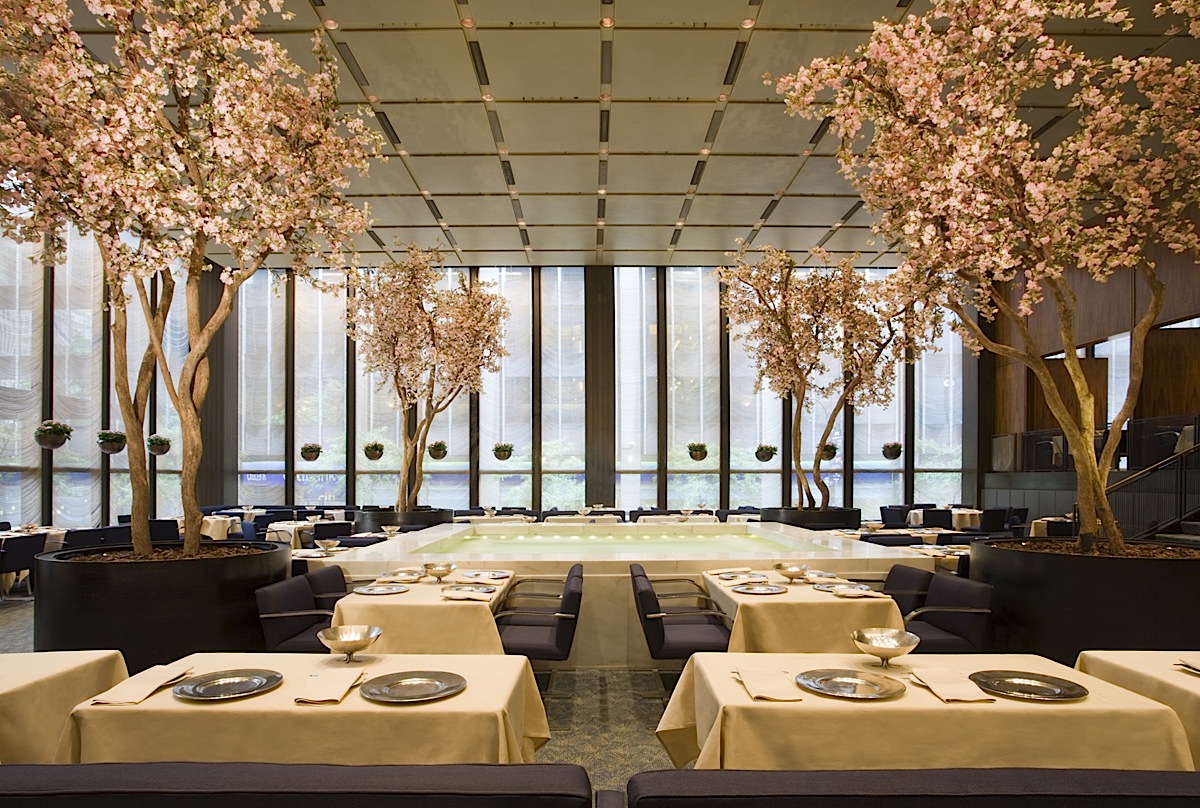
So,
after a nearly two-year lapse when I hadn't dined at
the restaurant, I returned the other night to see how
things were faring, only to find the dining room
completely packed on a Monday night. Alex was at
the host station, along with many of the staff I've
known for years coming and going. The pool still
gave off its blue-green glow, lights brightened the
trees' leaves, the tables were impeccably set, and the
menu was still printed on a single broadsheet. (It was
oddly revolutionary when some years ago the extensive
winelist was taken from the back of the menu and made
into a book of bottlings.) The bread bowl (a
design by Garth and Ada Louise Huxtable) is still
heaped with small croissants. And men all wore
jackets, most never thinking of showing up dressed any
other way, some because the restaurant requires them.
After enjoying an
impeccably made daiquiri, I looked over the menu, its
à la carte listings in bold face, and found
that, as everywhere, prices have risen. Dishes
here are not inexpensive--and the sirloin steak, at
$75, is high even by NYC steakhouse standards, though
it comes with baby beets, radish, and carrots, which
cost extra at steakhouses. Still, if you added
up an average of three courses here, the meal would
run you about the same as it would at Le Bernardin,
Daniel, or Eleven Madison Park, maybe less. You
also get free pink cotton candy at meal's end if
you're celebrating your birthday. An amazing bargain
right now is the "Spring Fever" Pool Room menu at
$59, and a $35 two-course lunch in the Grill Room.
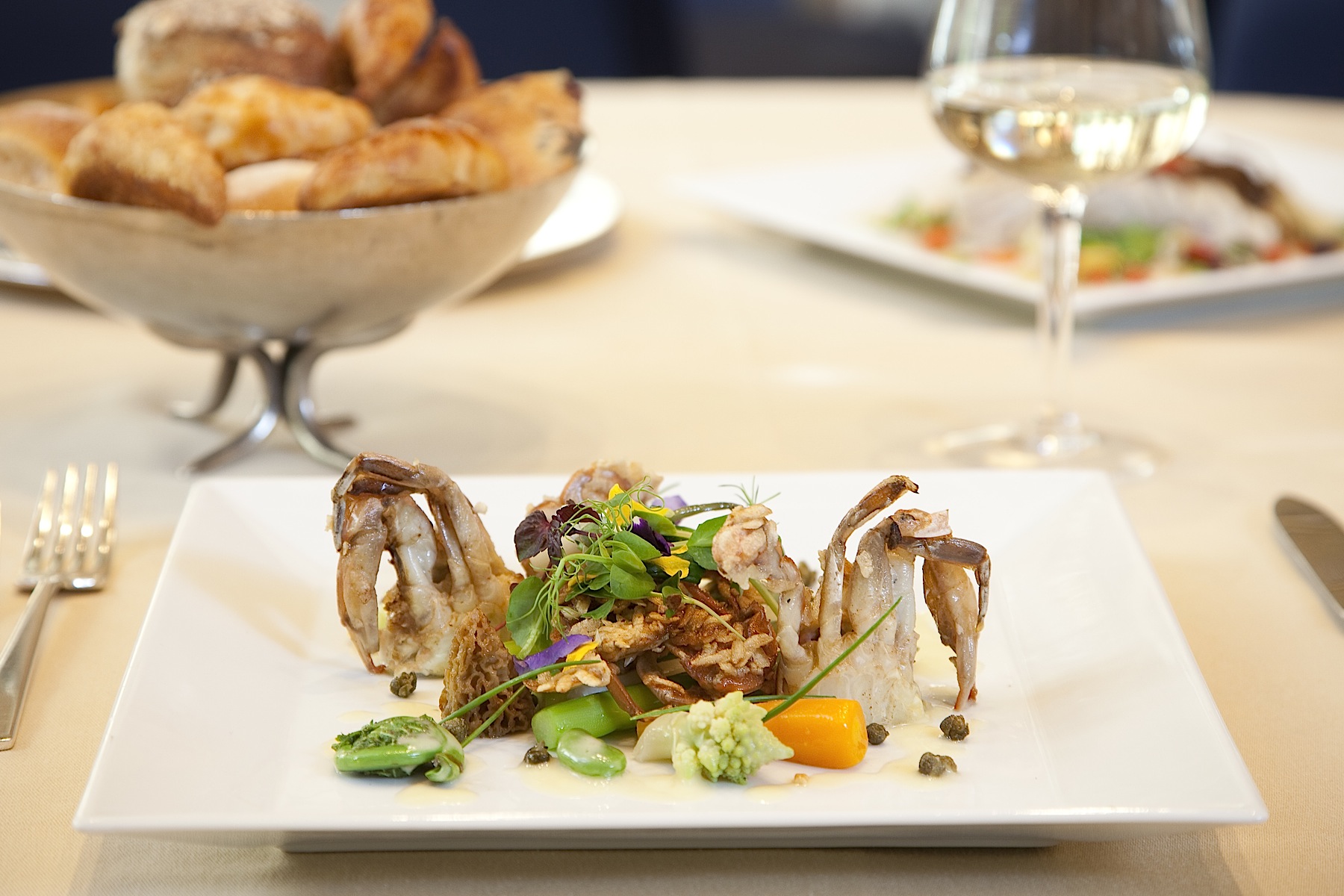 There are
several items on the menu that have been here almost
since the beginning, but, given the place's name,
there are significant seasonal changes. At the moment
they're offering the finest spring asparagus,
fiddlehead ferns, morels, shad and its roe,
crayfish, and softshell crabs (left).
These last were perfectly sautéed, fat and
crisp, as an evening's special, and the crayfish sweet
and abundant, nestled in a vol-au-vent pastry shell
with those asparagus and morels and cream sauce.
Extremely good was a risotto of spring's nettles, and
sweet pea agnolotti
with Iberico ham and mint came as close to a gambol on
a Maytime hillside as food can get.
There are
several items on the menu that have been here almost
since the beginning, but, given the place's name,
there are significant seasonal changes. At the moment
they're offering the finest spring asparagus,
fiddlehead ferns, morels, shad and its roe,
crayfish, and softshell crabs (left).
These last were perfectly sautéed, fat and
crisp, as an evening's special, and the crayfish sweet
and abundant, nestled in a vol-au-vent pastry shell
with those asparagus and morels and cream sauce.
Extremely good was a risotto of spring's nettles, and
sweet pea agnolotti
with Iberico ham and mint came as close to a gambol on
a Maytime hillside as food can get.
The Four Seasons is as well known
for the high quality of its Dover sole as any
restaurant in the city, slightly crisp from a moment
in flour, sauteéd in superb butter, then deftly
taken from the bone tableside. The
only misstep of the evening was that I ordered the
sole à la
meuniere, which should not have capers (which
would denote à
la grenobloise), as it did here. But
little matter: it was delicious.
Dinner ended with pastry chef Chris
Broberg's delightful rhubarb pie and moist,
tangy-sweet lemon sponge pudding, They also still
offer a Four Seasons classic, the famously dense and
decadent chocolate velvet cake with crème
fraîche.
That evening the food was as
superbly rendered as ever, testament to the
consistency of dining at The Four Seasons, where
everyone tries very very hard to make you feel that
nothing has or will ever really change here, decade by
decade. Things do, of course, but if any
restaurant can claim a timeless setting and ambiance,
it is The Four Seasons. Not to dine here is not
to have a true sense of New York at its finest.
Leonardo Da Vinci once said that "Simplicity is the
ultimate sophistication." And you know how hard he
worked to prove that.
The Four Seasons
is open for lunch Mon.-Fri., for dinner Mon.Sat.
Dinner appetizers run $18-$42, main courses $38-$75.
"Spring Fever" Pool Room menu $59; $35 two-course
lunch in Grill Room.
❖❖❖
AND TURN OFF THE KITCHEN FAN
The Official
High Times Cannabis Cookbook has just been published, with 50
recipes. and contains these tidbits of advice for
entertaining at home:
- Keep in mind that it is humanly
impossible to fatally overdose on cannabis, even if
you’ve just eaten an entire birthday cake frosted with
cannabis buttercream.
-Crank up some live Dead, get irie and start chopping your veggies.
-That artificially flavored processed cheese product is a tool of your own oppression, foisted on you by corporate overlords.
 -The
beloved cartoon character Popeye eats spinach because
it makes him superstrong, but what exactly was he
smoking in his little pipe?
-The
beloved cartoon character Popeye eats spinach because
it makes him superstrong, but what exactly was he
smoking in his little pipe?
-If the idea
of getting baked in front of grandma fills you with
dread, why risk it?
HIGH TIMES IN MINNESOTA
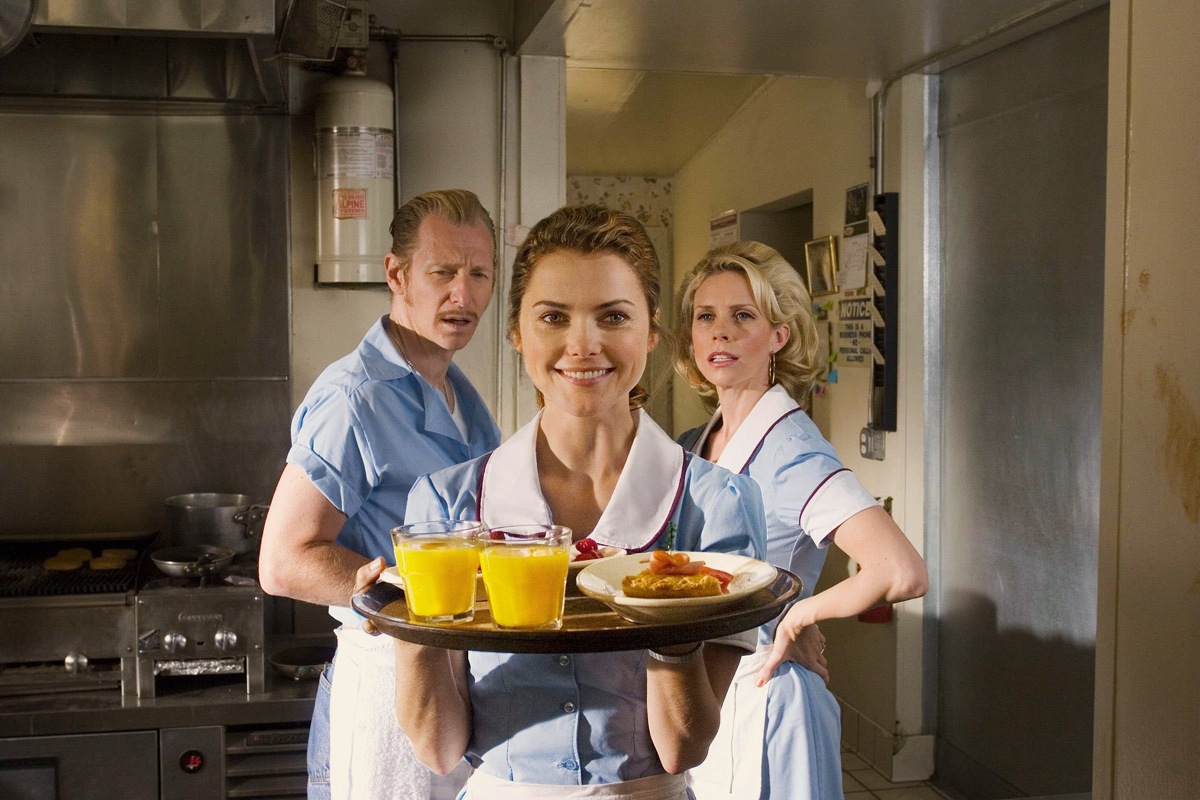
In Moorhead, Minnesota, waitress Stacy Knutson filed a lawsuit in Clay County District Court saying a customer left a takeout box from another restaurant at her table at the Fryn' Pan. Knutson insists she followed the customer to her car but that the customer told her to keep the box as a tip, which she found contained $12,000 in cash. Police told her to wait 90 days in case someone claimed the money and that because the money "smelled of marijuana" it was being held in a drug investigation. The Duluth Tribune News reported that Knutson was cut a check for $12,000 after police determined that the cash could not be tied to any criminal investigation.
Any of John Mariani's
books below may be ordered from amazon.com.
 |
My latest book, which just won the prize for best book from International Gourmand, written with Jim Heimann and Steven Heller, Menu Design in America, 1850-1985 (Taschen Books), has just appeared, with nearly 1,000 beautiful, historic, hilarious, sometimes shocking menus dating back to before the Civil War and going through the Gilded Age, the Jazz Age, the Depression, the nightclub era of the 1930s and 1940s, the Space Age era, and the age when menus were a form of advertising in innovative explosions of color and modern design. The book is a chronicle of changing tastes and mores and says as much about America as about its food and drink.
“Luxuriating vicariously in the pleasures of this book. . . you can’t help but become hungry. . .for the food of course, but also for something more: the bygone days of our country’s splendidly rich and complex past. Epicureans of both good food and artful design will do well to make it their coffee table’s main course.”—Chip Kidd, Wall Street Journal.
“[The menus] reflect the amazing craftsmanship that many restaurants applied to their bills of fare, and suggest that today’s restaurateurs could learn a lot from their predecessors.”—Rebecca Marx, The Village Voice. |
"Eating Italian will never be the same after reading John Mariani's entertaining and savory gastronomical history of the cuisine of Italy and how it won over appetites worldwide. . . . This book is such a tasteful narrative that it will literally make you hungry for Italian food and arouse your appetite for gastronomical history."--Don Oldenburg, USA Today. "Italian
restaurants--some good, some glitzy--far
outnumber their French rivals. Many of
these establishments are zestfully described
in How Italian Food Conquered the World, an
entertaining and fact-filled chronicle by
food-and-wine correspondent John F.
Mariani."--Aram Bakshian Jr., Wall Street
Journal.
"Equal parts
history, sociology, gastronomy, and just
plain fun, How Italian Food Conquered the
World tells the captivating and delicious
story of the (let's face it) everybody's
favorite cuisine with clarity, verve and
more than one surprise."--Colman Andrews,
editorial director of The Daily
Meal.com. "A fantastic and fascinating
read, covering everything from the influence
of Venice's spice trade to the impact of
Italian immigrants in America and the
evolution of alta cucina. This book will
serve as a terrific resource to anyone
interested in the real story of Italian
food."--Mary Ann Esposito, host of PBS-TV's
Ciao
Italia. "John Mariani has written the
definitive history of how Italians won their
way into our hearts, minds, and
stomachs. It's a story of pleasure over
pomp and taste over technique."--Danny Meyer,
owner of NYC restaurants Union Square Cafe,
Gotham Bar & Grill, The Modern, and
Maialino.
|
 |
 |
 |
 |
 |
 |
 |
 |
❖❖❖
 Everett Potter's Travel Report:
Everett Potter's Travel Report: 
 Eating Las Vegas
is the new on-line site for Virtual Gourmet
contributor John A. Curtas., who since 1995
has been commenting on the Las Vegas food
scene and reviewing restaurants for Nevada
Public Radio. He is also the
restaurant critic for KLAS TV, Channel 8 in
Las Vegas, and his past reviews can be
accessed at KNPR.org.
Click on the logo below to go directly to
his site.
Eating Las Vegas
is the new on-line site for Virtual Gourmet
contributor John A. Curtas., who since 1995
has been commenting on the Las Vegas food
scene and reviewing restaurants for Nevada
Public Radio. He is also the
restaurant critic for KLAS TV, Channel 8 in
Las Vegas, and his past reviews can be
accessed at KNPR.org.
Click on the logo below to go directly to
his site.

Tennis Resorts Online: A Critical Guide to the World's Best Tennis Resorts and Tennis Camps, published by ROGER COX, who has spent more than two decades writing about tennis travel, including a 17-year stretch for Tennis magazine. He has also written for Arthur Frommer's Budget Travel, New York Magazine, Travel & Leisure, Esquire, Money, USTA Magazine, Men's Journal, and The Robb Report. He has authored two books-The World's Best Tennis Vacations (Stephen Greene Press/Viking Penguin, 1990) and The Best Places to Stay in the Rockies (Houghton Mifflin, 1992 & 1994), and the Melbourne (Australia) chapter to the Wall Street Journal Business Guide to Cities of the Pacific Rim (Fodor's Travel Guides, 1991).


MARIANI'S VIRTUAL GOURMET
NEWSLETTER is published weekly. Editor/Publisher: John
Mariani.
Contributing Writers: Christopher Mariani, Robert Mariani,
John A. Curtas, Edward Brivio, Mort Hochstein,
Suzanne Wright, and Brian Freedman. Contributing
Photographers: Galina Stepanoff-Dargery,
Bobby Pirillo. Technical Advisor: Gerry McLoughlin.
© copyright John Mariani 2012
